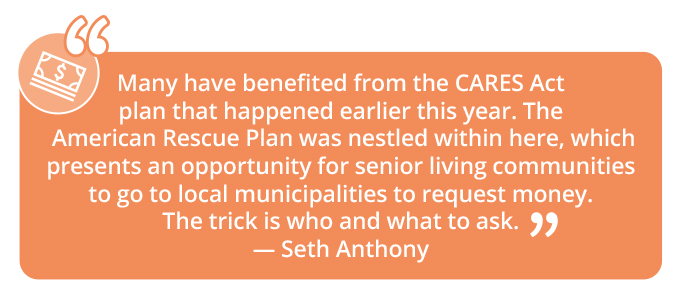At last week’s Sales & Marketing Roundtable, we had a very special guest. We celebrated Martha B.’s 105th birthday! Martha has been an independent living resident of Parkway Village in Little Rock, Arkansas, for over 17 years.
After we sang Happy Birthday to her, Martha shared her perspective on life at a senior living community, her fondest memories, and some wise words on how to live a vibrant life, no matter your age.
Here are some questions Martha answered from participants, who were participating virtually everywhere on zoom.
What’s your favorite thing about being 105?
“I like to watch my grandkids and great-grandkids. It’s fun to watch them and see what they do. I have seven total grandchildren, and three are married now. I like to play bridge. But my big problem is being able to see, so I can’t do that as much any longer. Getting around is harder, too, but I always make it to bingo.”
What is the secret of staying so young and vibrant?”
“Well, I’ve always been active. I was always active in organizations at church. I knew the local high school principal well. After my children were grown, I went to work over there as a secretary for 22 years. Then, my husband had a small business and I kept the books. So, I did two or three jobs over the years and kept real active. I play bridge a lot, and I’ve always loved knitting and embroidery. After I retired, I did a lot of that.”
What’s the biggest change you’ve seen over the course of your life?”
“I’ve seen the invention of radios, TV, cars — my first car was a Ford that my dad had to crank in the front to go forward! That was the first car I can remember. I’ve also seen a lot of change in home appliances. I didn’t have a washing machine or a dryer growing up, and those kinds of things are wonderful to have around the house.”
Do you have any fond memories of the last 105 years you would like to share?
“I have just enjoyed my life. I’ve always gone to Sunday school and church, and I’ve always stayed involved there. I love knitting, I do a lot of that at church. I play lots of bridge, and they say that’s very good for your mind. And I try to play bingo! When I moved here, I was very active and knew everybody and enjoyed all of the activities. Nowadays, things have slowed down because I can’t see as well, but I would still be doing everything if I could.”
What is the biggest historical event that stands out to you in the 105 years you’ve lived?
“Oh, goodness. It’s hard to think of one … I watched our church burn. I lived close enough to see the smoke. When I went over with my family, I saw it burning. That was ‘history’ to me.”
What is life like there at Parkway Village?
“It’s great, they’ve really taken care of me here. It’s been a perfect place for me. I moved here after I developed macular degeneration and I could no longer drive, so my son said I needed to be somewhere with people. Since I moved here, everyone has been wonderful to me. We have excellent security. The maintenance team comes as soon as you call. I have a housekeeper who comes to my apartment once a week, but other than that, I take care of myself and live independently. And I hope I can keep doing so!”
Do you have any advice for us on helping people make the decision to move to a community?
“People always say, ‘I’m not ready.’ But what I try to tell them is, ‘You will never be ready.’ But you just have to pick up and move. My son is a psychiatrist, and he made sure I left home, because I wouldn’t have been able to get along when I couldn’t drive anymore. So, you need to move somewhere to be with others. I think a lot of people wait until it’s too late.”
Is there anything else you’d like to share?
“I wanted to mention that Boston University has contacted me. They do work for a lot of senior organizations. They asked me to volunteer for their Alzheimer’s research, so I’m working for them. They have a number of people in my age group in the process of testing.”
Happy birthday to Martha! We are so grateful that you were able to join us on the roundtable today. You are a testament to all we do!
Please join our weekly Sales & Marketing Roundtables on Thursdays at noon ET, 11 a.m. CT and 9 a.m. PT.
For login information, email


























